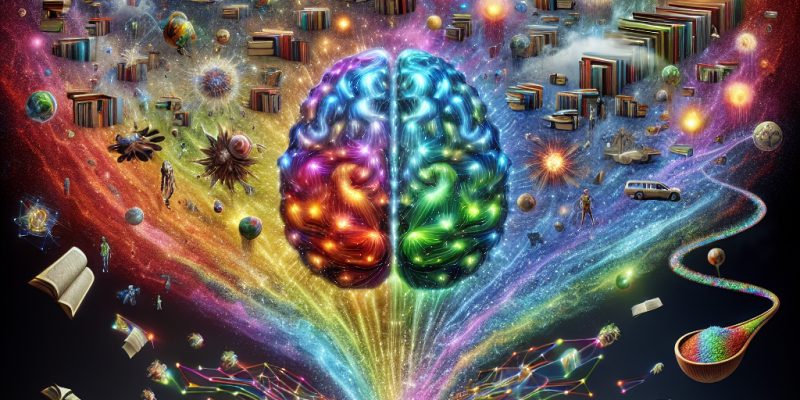From Words to Worlds: The Power of Generative AI in Storytelling

From Words to Worlds: The Power of Generative AI in Storytelling
In the rapidly evolving landscape of technology, few innovations have captured the imagination like generative artificial intelligence (AI). From chatbots that can engage in meaningful conversation to algorithms that compose symphonies, generative AI is pushing the boundaries of creativity in unprecedented ways. Among its various applications, storytelling stands out as one of the most compelling arenas where AI is not only enhancing traditional narratives but also redefining the very essence of storytelling itself.
The Evolution of Storytelling
Storytelling is a timeless art form that has shaped cultures and societies for centuries. From oral traditions passed down through generations to the written word immortalized in books, narratives have served as vessels for human experience, emotion, and connection. However, the advent of digital technology and, more recently, generative AI is transforming how stories are conceived, developed, and shared.
Traditionally, storytelling required a human touch, relying on intuition, emotional intelligence, and lived experience to craft narratives that resonate. While these elements are irreplaceable, AI introduces a new dimension to the craft, prompting questions about creativity, authorship, and the nature of storytelling itself.
The Mechanics of Generative AI
At its core, generative AI uses datasets to learn patterns, structures, and styles across various forms of content. By analyzing vast amounts of text, AI can craft original stories, create dialogues, and even generate entire plots based on user-defined parameters. Language models like GPT-3 and its successors have demonstrated remarkable capabilities in understanding context and producing coherent and engaging narratives.
Such technology can analyze a user’s preferences, understand character arcs, develop plot twists, and create dialogue that reflects authentic human interactions. This adaptability allows for personalized storytelling experiences, where the reader or viewer is not just a passive consumer but an active participant in the narrative.
Enhancing Creativity and Collaboration
While some may fear that AI could diminish the role of human storytellers, the reality is quite the opposite. Generative AI can serve as a powerful collaborative tool that amplifies human creativity. Writers can use AI to brainstorm ideas, overcome writer’s block, or even curate characters and settings, thus allowing them to focus on enhancing the emotional and thematic depth of their stories.
For example, an author might generate multiple plot ideas through AI-driven prompts, and then select the most intriguing ones to explore further. They could leverage AI-generated character backstories to deepen character development, or experiment with alternative endings to gauge which resonates most with their intended audience.
Democratizing Storytelling
One of the most exciting aspects of generative AI is its potential to democratize storytelling. With access to AI tools, individuals who may not have had the resources or technical skills can now craft compelling narratives. This opens up a world of possibilities for budding authors, game developers, and content creators who can use AI to bring their visions to life without needing to master intricate narrative structures or complex coding languages.
Moreover, AI can help preserve and promote diverse voices in storytelling. By generating narratives that draw from a wide array of cultural backgrounds and experiences, it has the potential to amplify marginalized stories that might otherwise go unheard, creating a richer and more varied tapestry of global narratives.
Ethical Considerations and Challenges
Despite the myriad advantages generative AI brings to storytelling, it also poses significant ethical challenges. Questions around originality, copyright, and the ownership of AI-generated content are complex and largely unresolved. Additionally, there is a fine line between inspiration and appropriation. Ensuring that AI tools respect cultural nuances and do not inadvertently propagate stereotypes or harmful narratives requires careful oversight and thoughtful design.
Furthermore, as AI-generated content becomes more prevalent, distinguishing between human-created and machine-generated narratives may become increasingly difficult, raising concerns about authenticity and emotional depth. While AI may produce coherent stories, the emotional resonance that arises from genuine human experiences isn’t something that can be easily replicated by algorithms.
The Future of Storytelling
As we stand on the brink of this new storytelling era, the most important question is not whether AI will replace human writers, but how it can coexist and enrich the creative process. By embracing generative AI as a collaborative partner, storytellers can push the boundaries of their craft, exploring new genres, styles, and forms of expression.
In the coming years, we might see an explosion of hybrid narratives that blend human creativity with the computational prowess of AI, leading to innovative storytelling mediums—be it interactive fiction, immersive virtual reality experiences, or dynamic, audience-driven narratives that unfold in real time.
In conclusion, the integration of generative AI in storytelling is a testament to the evolving nature of creativity. By transforming words into worlds, AI not only enhances our storytelling capabilities but also invites us to question the very heart of the narratives we share. As we journey forward, the collaborative potential between human and machine could unlock realms of imagination previously thought unattainable, forging connections across the stories that bind us all.














